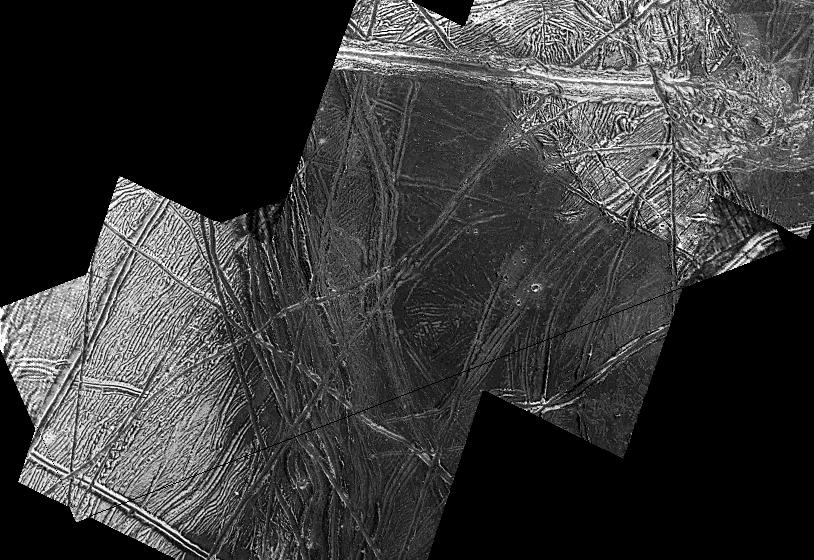All Resources
A Dark Spot on Europa

This view taken by NASA's Galileo spacecraft of Jupiter's icy moon Europa focuses on a dark, smooth region whose center is the lowest area in this image. To the west (left), it is bounded by a cliff and terraces, which might have been formed by normal faulting. The slopes toward the east (right) leading into the dark spot are gentle.
Near the center of the dark area, it appears the dark materials have covered some of the bright terrain and ridges. This suggests that when the dark material was deposited, it may have been a fluid or an icy slush.
Only a few impact craters are visible, with some of them covered or flooded by dark material. Some appear in groups, which may indicate that they are secondary craters formed by debris excavated during a larger impact event. A potential source for these is the nearby crater Mannann`an.
North is to the top of the picture which is centered at 1 degree south latitude and 225 degrees west longitude. The images in this mosaic have been re-projected to 55 yards (50 meters ) per picture element. They were obtained by the Solid State Imaging (SSI) system on March 29, 1998, during Galileo's fourteenth orbit of Jupiter, at ranges as close as 1,200 miles (1,940 kilometers) from Europa.


